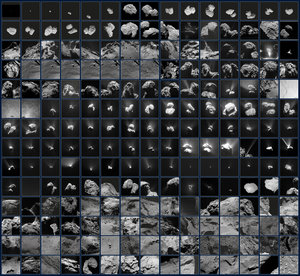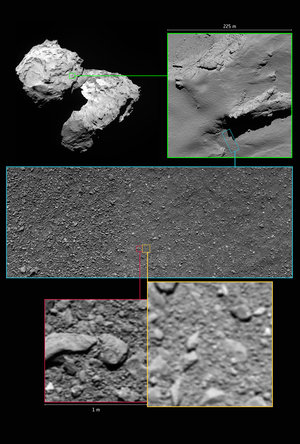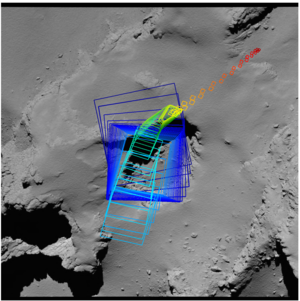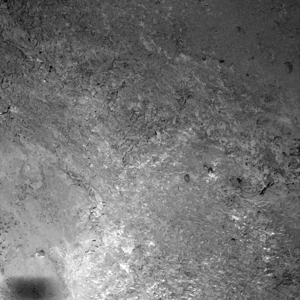Accept all cookies Accept only essential cookies See our Cookie Notice

About ESA
The European Space Agency (ESA) is Europe’s gateway to space. Its mission is to shape the development of Europe’s space capability and ensure that investment in space continues to deliver benefits to the citizens of Europe and the world.
Highlights
ESA - United space in Europe
This is ESA ESA facts Member States & Cooperating States Funding Director General Top management For Member State Delegations European vision European Space Policy ESA & EU Space Councils Responsibility & Sustainability Annual Report Calendar of meetings Corporate newsEstablishments & sites
ESA Headquarters ESA ESTEC ESA ESOC ESA ESRIN ESA EAC ESA ESAC Europe's Spaceport ESA ESEC ESA ECSAT Brussels Office Washington OfficeWorking with ESA
Business with ESA ESA Commercialisation Gateway Law at ESA Careers Cyber resilience at ESA IT at ESA Newsroom Partnerships Merchandising Licence Education Open Space Innovation Platform Integrity and Reporting Administrative Tribunal Health and SafetyMore about ESA
History ESA Historical Archives Exhibitions Publications Art & Culture ESA Merchandise Kids Diversity ESA Brand Centre ESA ChampionsLatest
Space in Member States
Find out more about space activities in our 23 Member States, and understand how ESA works together with their national agencies, institutions and organisations.
Science & Exploration
Exploring our Solar System and unlocking the secrets of the Universe
Go to topicAstronauts
Missions
Juice Euclid Webb Solar Orbiter BepiColombo Gaia ExoMars Cheops Exoplanet missions More missionsActivities
International Space Station Orion service module Gateway Concordia Caves & Pangaea BenefitsLatest
Space Safety
Protecting life and infrastructure on Earth and in orbit
Go to topicAsteroids
Asteroids and Planetary Defence Asteroid danger explained Flyeye telescope: asteroid detection Hera mission: asteroid deflection Near-Earth Object Coordination CentreSpace junk
About space debris Space debris by the numbers Space Environment Report In space refuelling, refurbishing and removingSafety from space
Clean Space ecodesign Zero Debris Technologies Space for Earth Supporting Sustainable DevelopmentLatest
Applications
Using space to benefit citizens and meet future challenges on Earth
Go to topicObserving the Earth
Observing the Earth Future EO Copernicus Meteorology Space for our climate Satellite missionsCommercialisation
ESA Commercialisation Gateway Open Space Innovation Platform Business Incubation ESA Space SolutionsLatest
Enabling & Support
Making space accessible and developing the technologies for the future
Go to topicBuilding missions
Space Engineering and Technology Test centre Laboratories Concurrent Design Facility Preparing for the future Shaping the Future Discovery and Preparation Advanced Concepts TeamSpace transportation
Space Transportation Ariane Vega Space Rider Future space transportation Boost! Europe's Spaceport Launches from Europe's Spaceport from 2012
Rosetta's last image
Thank you for liking
You have already liked this page, you can only like it once!
Update 28 September 2017: The altitude at which this image was taken has been revised to 23.3–26.2 m above the surface, corresponding to an image scale of about 2.5 mm/px, and an image size of about 1.2 across. The uncertainty arises from the exact method of altitude calculation and the comet shape model used.
On Friday, Rosetta’s historic mission concluded with the spacecraft descending to the surface of Comet 67P/Churyumov-Gerasimenko.
Rosetta was commanded to make a final series of unique scientific measurements very close to the comet, including taking images like this one, of its final resting place.
The image shown here, in fact, was the last ever taken by Rosetta, about 20 m above the surface. The scale is 2 mm/pixel and the image measures about 96 cm across.
The OSIRIS wide-angle camera was not designed to be used below a few hundred metres, and had to be used in a special mode. As expected, the image is out of focus.
After contact was confirmed and the mission declared complete, Mission Manager Patrick Martin announced the name of the impact site.
He said, “The Rosetta Stone was originally located in Sais, and we shall name the impact point as such so we can finally say that Rosetta has come home to Sais.”
The mission was named after the Rosetta Stone, itself so named because it was found in a town called Rashid (Rosetta), having thought to have been moved from a temple in Sais.
Just as the Rosetta Stone was pivotal in understanding ancient language and history, so the vast treasure trove of Rosetta spacecraft data is changing our view on how comets and the Solar System formed.
-
CREDIT
ESA/Rosetta/MPS for OSIRIS Team MPS/UPD/LAM/IAA/SSO/INTA/UPM/DASP/IDA -
LICENCE
ESA Standard Licence

Rosetta’s ever-changing view of a comet

Rosetta’s last images in context

Rosetta comet close-ups

Rosetta’s final imaging sequence















 Germany
Germany
 Austria
Austria
 Belgium
Belgium
 Denmark
Denmark
 Spain
Spain
 Estonia
Estonia
 Finland
Finland
 France
France
 Greece
Greece
 Hungary
Hungary
 Ireland
Ireland
 Italy
Italy
 Luxembourg
Luxembourg
 Norway
Norway
 The Netherlands
The Netherlands
 Poland
Poland
 Portugal
Portugal
 Czechia
Czechia
 Romania
Romania
 United Kingdom
United Kingdom
 Slovenia
Slovenia
 Sweden
Sweden
 Switzerland
Switzerland
























